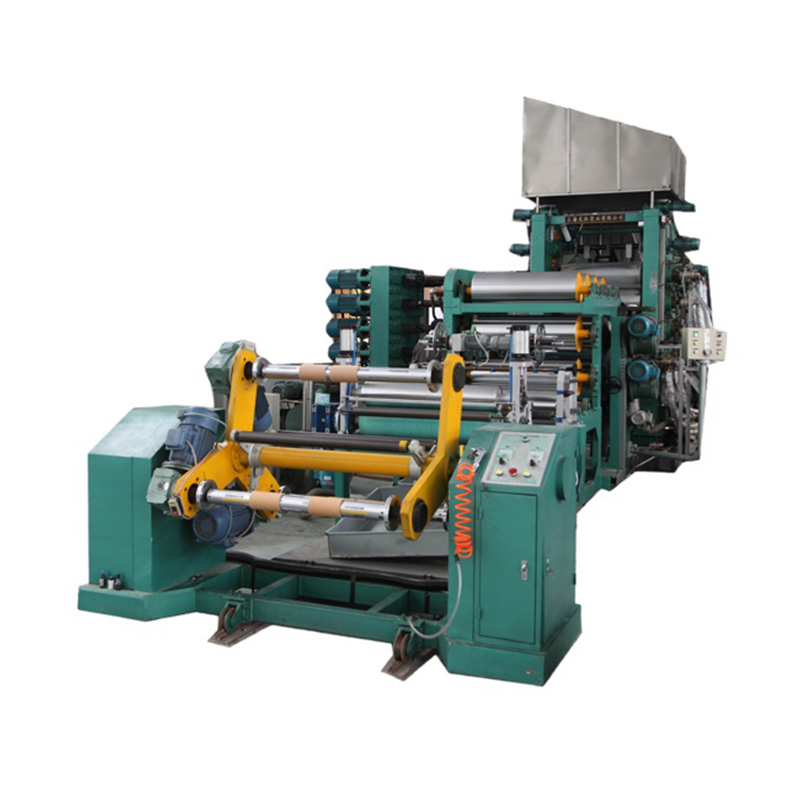PVC film calender machine is widely used in the production of flexible PVC films for applications such as packaging, laminates, advertising materials, and protective coverings. One of the primary concerns of manufacturers is achieving high productivity without compromising product quality. PVC film calender machines significantly improve production efficiency through advanced design, precise control, and optimized processing capabilities.
1. Continuous Production Capability
Unlike batch processing methods, PVC film calender machines enable continuous production of PVC films. The raw PVC compound, which includes plasticizers, stabilizers, and pigments, is fed into the machine in a uniform, controlled manner. The machine’s rollers compress and stretch the material to achieve the desired thickness and surface finish. This continuous process minimizes downtime and eliminates the repetitive setup and shutdown steps associated with batch production, leading to higher throughput.
2. Precise Thickness Control
One of the critical factors affecting efficiency is the ability to produce films with consistent thickness. Modern PVC calender machines feature precision-engineered rollers and hydraulic systems that maintain exact gap settings. Advanced electronic control systems continuously monitor the thickness of the film in real time, automatically adjusting roller pressure or speed as needed. This reduces material waste, ensures uniform product quality, and minimizes the need for rework, all of which directly improve production efficiency.
3. High-Speed Operation
PVC calender machines are designed for high-speed operation without compromising film quality. With optimized roller designs and improved heating systems, these machines can process PVC compounds quickly while maintaining consistent surface properties. The ability to operate at higher speeds allows manufacturers to produce more film per hour, maximizing the utilization of raw materials and reducing production costs per unit.
4. Reduced Labor Requirements
Automation and advanced control systems in PVC film calender machines reduce the dependency on manual labor. Operators no longer need to constantly monitor and adjust the machine; instead, they can rely on programmable settings for thickness, temperature, and speed. This not only improves safety but also allows a smaller team to manage larger production volumes efficiently. Fewer manual interventions also reduce human error, contributing to smoother operations and higher overall efficiency.

5. Improved Energy Efficiency
Energy consumption is a significant factor in production efficiency. Modern PVC calender machines are equipped with efficient heating and cooling systems, ensuring that energy is applied only where necessary. Uniform heating across rollers reduces energy loss and accelerates the processing of the PVC film. Some machines also incorporate regenerative energy systems that capture and reuse heat, lowering overall energy costs while maintaining continuous production at optimal speed.
6. Reduced Material Waste
Efficient calender machines are designed to minimize material waste through precise control and uniform processing. Variations in thickness or surface defects are quickly detected and corrected, reducing scrap rates. Additionally, continuous feeding systems ensure that raw materials are fully utilized, with minimal loss during startup or shutdown. Reduced material waste translates directly into cost savings and higher production efficiency.
7. Versatility and Quick Changeovers
Many PVC film calender machines are versatile, allowing for quick adjustments to produce films of different thicknesses, widths, or surface finishes. This flexibility enables manufacturers to switch between different product specifications without long downtime, enhancing overall productivity. Quick changeovers also allow businesses to respond faster to market demand, increasing operational efficiency.
8. Integration with Downstream Processes
PVC calender machines are often integrated with downstream equipment such as chill rolls, winder systems, and cutting machines. Seamless integration ensures that the film produced is immediately transported, cooled, and wound without intermediate handling delays. This streamlined workflow reduces bottlenecks in the production line, ensuring maximum utilization of the machine and consistent output rates.
Conclusion
In summary, a PVC film calender machine improves production efficiency through a combination of continuous operation, precise thickness control, high-speed processing, labor reduction, energy efficiency, minimal material waste, versatility, and integration with downstream systems. By leveraging these features, manufacturers can produce high-quality PVC films at faster rates, lower costs, and with greater reliability. In today’s competitive market, such efficiency not only boosts profitability but also enables companies to respond quickly to customer demands while maintaining consistent product quality.



 English
English 中文简体
中文简体 русский
русский